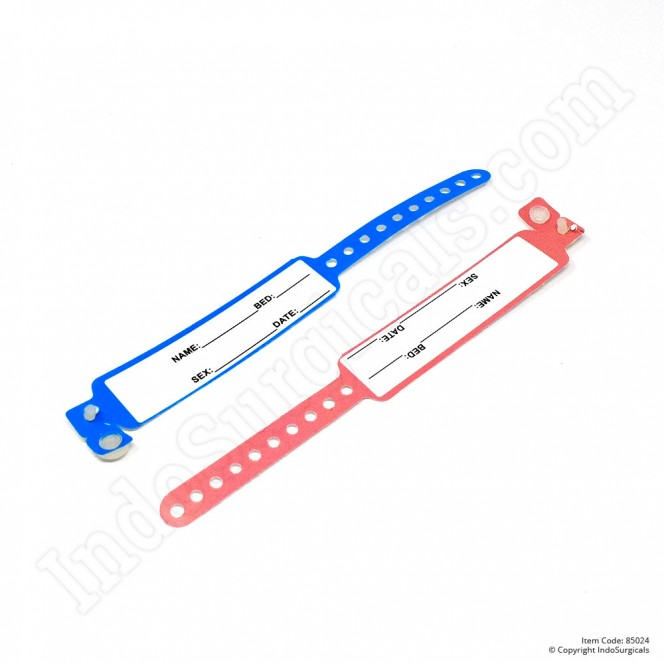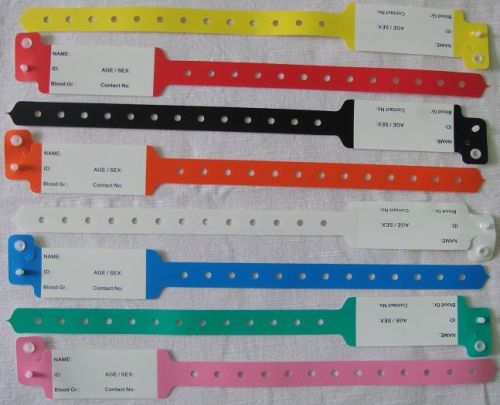Exploring the Advantages of a Patient Identification Band in Preventing Medical Errors
Exploring the Advantages of a Patient Identification Band in Preventing Medical Errors
Blog Article
Checking Out the Various Sorts Of Patient Identification Band Used in Medical Facilities
In the detailed world of health care, the critical duty of Patient Identification bands typically goes unnoticed. These bands, differing from straightforward paper wristbands to advanced RFID bands, form the backbone of Patient safety protocols, making certain precision in Patient Identification. Yet, the huge diversity of these bands, each with its special advantages and limitations, is typically overlooked. As we browse via this subject, one might gain understanding right into the refined intricacies and critical relevance of such bands in clinical facilities.
Recognizing the Significance of Patient Identification Bands
While they might appear like plain accessories, Patient Identification bands play an essential duty in medical facilities. These bands serve as an essential device for validating Patient identification, protecting against clinical mistakes associated to misidentification. Patient Identification bands likewise aid in enhancing management jobs, making certain accurate record-keeping and payment.
Standard Paper Wristbands: Their Use and Limitations
Conventional paper wristbands have been a staple in Patient Identification throughout different clinical centers. While their use prevails, they nurture specific limitations that might impact their effectiveness in Patient administration. This section will certainly concentrate on the extent of their application and the intrinsic disadvantages related to their usage.
Paper Wristbands: Use Scope
In the world of Patient Identification, paper wristbands have long held an important function. These bands are commonly used in outpatient settings, where the Patient's keep is temporary. In spite of innovations in modern technology, the humble paper wristband remains a cost-efficient and reliable solution for Patient Identification in various medical care circumstances.
Limitations of Paper Wristbands
Regardless of their widespread usage, paper wristbands are not without their downsides. Their physical sturdiness is among the considerable restrictions. Direct exposure to water, sweat, or harsh handling can make them unreadable or also create them to degenerate. On top of that, paper wristbands often lack the technical abilities of even more modern-day options, such as barcoding or RFID chips, limiting their performance to merely displaying created info. The inability to upgrade or modify the information on the wristband is an additional imperfection. In addition, if the information is transcribed, readability can be jeopardized, causing potential misidentification. Paper wristbands can cause discomfort or skin irritability to some clients, particularly when used for prolonged periods.
Barcoded Wristbands: Improvements in Patient Identification
While Patient Identification has actually long been a crucial aspect of health care, the arrival of barcoded wristbands indicates a substantial leap forward. These bands leverage the simpleness of barcoding modern technology, permitting for Patient info to be swiftly checked and accessed. They improve the speed and accuracy of Patient Identification, decreasing the risk of medical mistakes connected to misidentification. Barcoded wristbands are cost-effective, simple to produce, and get rid of handwriting mistakes typical with hands-on systems. They are not without constraints. While they provide improvements over typical bands, the barcode can end up being smudged or worn, rendering it unreadable. Regardless of this, barcoded wristbands continue to be a necessary device in modern-day health care settings, signifying the crossway of modern technology and Patient treatment.
Superhigh Frequency Identification (RFID) Bands: a Step In The Direction Of Futuristic Medical Care
The evolution of Patient Identification bands has caused the emergence of Superhigh frequency Identification (RFID) Bands (patient identification band). These cutting-edge gadgets existing crucial benefits for medical care facilities, using an extra effective and technologically progressed methods of Patient Identification. The application of RFID in medical care is a significant action towards a much more futuristic approach to Patient management and safety
Comprehending RFID Bands

RFID Bands: Trick Benefits
Mostly, these bands improve Patient security by giving exact, immediate Identification, thereby lowering clinical mistakes. RFID bands can save a large quantity of Patient information, including clinical background and allergic reactions, enabling individualized care. On the whole, RFID bands stand for a substantial development in Patient Identification innovation, profiting both clients and healthcare companies.
Applying RFID in Healthcare
As we tip right into a technologically advanced era, the application of RFID bands in healthcare comes to be significantly essential. These bands give a seamless method to track and recognize people, guaranteeing their safety and security and enhancing performance in treatment procedures. RFID bands offer many benefits over traditional Identification approaches. They can keep a large amount of information, including the Patient's case history and therapy plans, which can be conveniently accessed by medical care carriers. This data aids doctors make notified decisions pertaining to the Patient's treatment plan. Furthermore, RFID bands minimize medical errors by providing exact Patient Identification, which is essential in protecting against misdiagnosis or wrong medication administration. Hence, the application of RFID bands is a considerable step in the direction of enhancing Patient safety and health care shipment.

Color-Coded Wristbands: Aiding in Quick and Accurate Diagnosis
In the bustling environment of a medical facility, color-coded wristbands have emerged as essential tools for swift and accurate Identification of a person's clinical condition. These wristbands, worn by individuals, bring certain why not try these out shades that match to different medical problems or standings. For example, red can show allergy dangers, while yellow may represent a loss risk. This system is designed to supply instant aesthetic cues to medical care companies, boosting Patient safety and care high quality. In emergency situation scenarios, the use of these wristbands enables quick decision-making. The effectiveness of color-coded wristbands depends on the uniformity of color interpretation throughout healthcare institutions, calling for usual criteria for constant application.
Techniques for Efficient Execution and Administration of Patient ID Bands
Attaining optimal use of Patient Identification bands demands a well-structured technique for their execution and administration. Patient education is also important; individuals should comprehend the function of the bands and the need for their consistent wear. It's crucial to have here a backup plan in location, such as barcode scanning or biometrics, to make sure that Patient Identification is never ever endangered.
Verdict
Patient Identification bands are essential in clinical centers to guarantee safety and security and accuracy. Traditional paper, barcoded, RFID, and color-coded wristbands each hold one-of-a-kind benefits, varying from cost-effectiveness to advanced data storage and instant clinical alerts. Effective execution and management of these bands can substantially reduce medical mistakes, improve performance, and boost total Patient treatment. Therefore, understanding and utilizing these Identification tools is paramount for preserving high standards in medical care.
These bands, differing from simple paper wristbands to sophisticated RFID bands, form the backbone of Patient safety and security procedures, guaranteeing precision in Patient Identification.The evolution of Patient Identification bands has brought about the appearance of Radio Frequency Identification (RFID) Bands. Overall, RFID bands stand for a considerable development in Patient Identification modern technology, benefiting both individuals and health care companies.
RFID bands lower clinical errors by supplying exact Patient Identification, which is vital in protecting against misdiagnosis or incorrect medication management. Patient education and learning is additionally crucial; patients need to recognize the purpose of the bands and the requirement for their constant wear.
Report this page